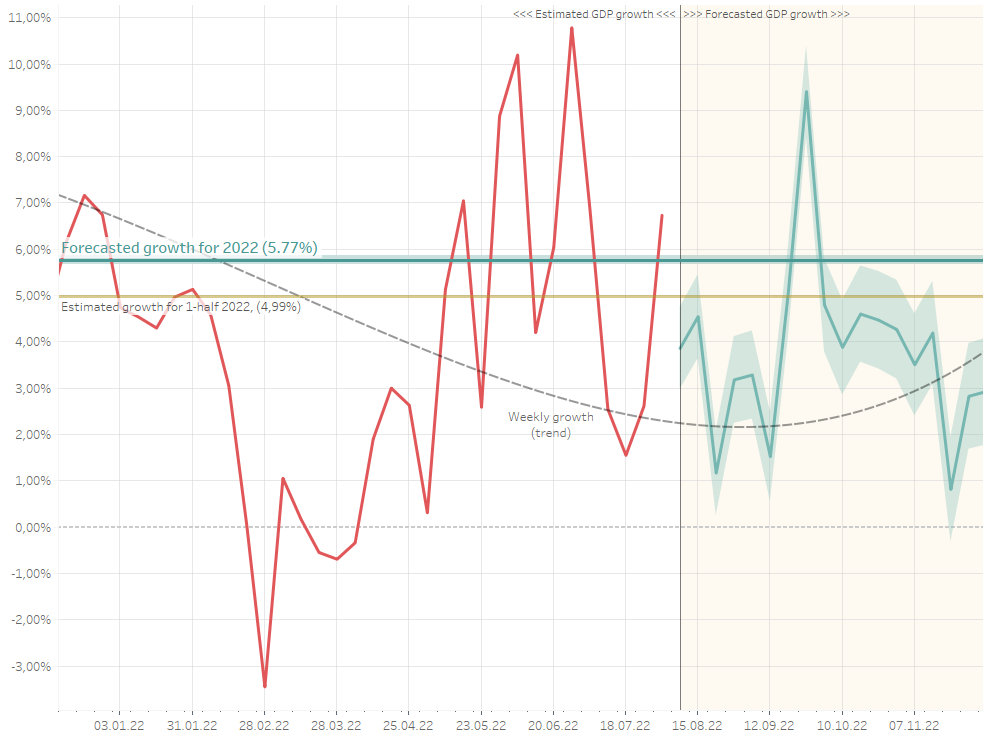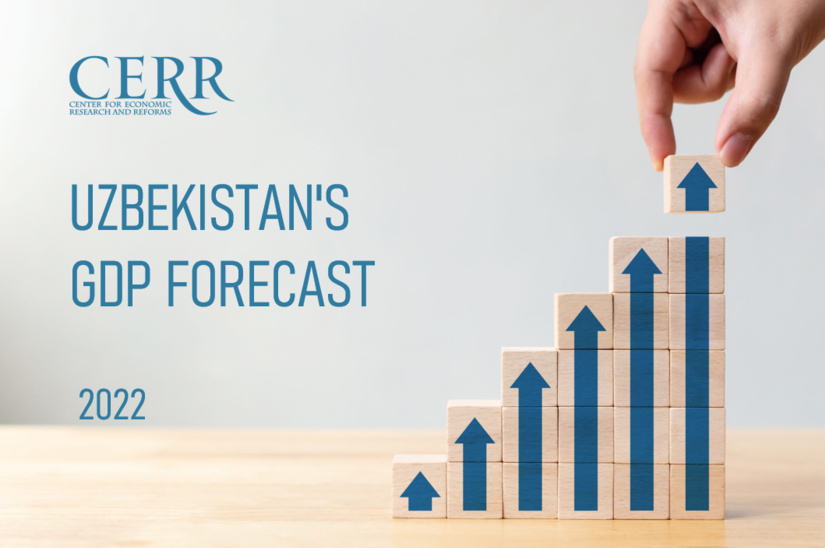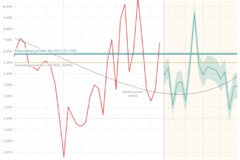Based on the collection of about 250 weekly Google search results for 20 categories of indicators combined with estimates of prices for individual products (including changes in gold and oil prices) as well as fundamental variables of gross imports and reserves, a weekly forecast of the GDP of the Republic of Uzbekistan was carried out.
Uzbekistan's economy has been significantly affected by negative external shocks. The analysis takes into account the negative factors that the country was exposed to in the 1st half of 2022 (political unrest in Kazakhstan, large-scale power outage and the conflict in Ukraine).
The forecasts revealed specific aspects of GDP that cannot be identified in quarterly figures. In particular, a significant slowdown was observed during February and March of this year. Nevertheless, the subsequent economic recovery was also significant.
Uzbekistan's economic growth in the first quarter is usually lower due to seasonal factors. During 2018-2021, Uzbekistan's GDP growth in the first quarters was on average 0.43% less than the annual GDP growth. Therefore, negative factors exacerbated the economic consequences and slowed down GDP growth in the first quarter of 2022.
Forecasted weekly growth rates of GDP for 2022

Taking into account the above-mentioned factors, as well as consolidating weekly forecast indicators of GDP dynamics, the estimated economic growth in the 1st half of 2022 compared to the 1st half of 2021 amounted to 4.99%.
Thus, there is a growing trend in the weekly dynamics of GDP for the 2nd half of 2022, which will increase the GDP growth rate by at least 0.68% year-on-year. Accordingly, real GDP growth for 2022 is projected at 5.77%.
Based on this, the projected range of economic growth in Uzbekistan is set at 5.67%-5.87% for 2022.
For reference: nowcasting is a method that is widely used in the development of national economic policy in many developed countries, including the Bank of England, the European Central Bank and the OECD. Models of this kind have similar characteristics to current traditional models, but significantly exceed them during "crisis" episodes (for example, 2008-2009, 2020 and the current situation). The current method is relevant because the main statistical data are available with a significant delay, especially for quarterly GDP figures. This forecast is also used to assess specific aspects of the state of the economy, such as the labor market and the welfare of the population.
Asror Nigmonov
CERR head of sector






















leave a comment